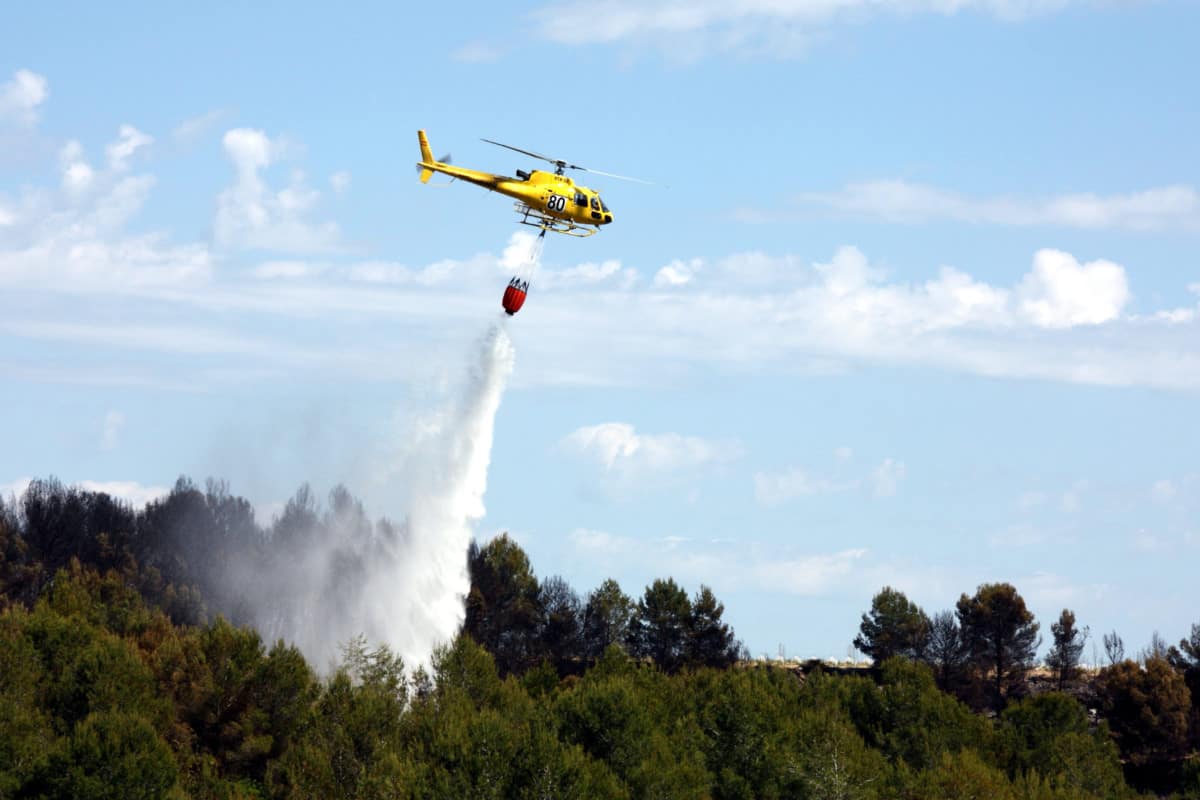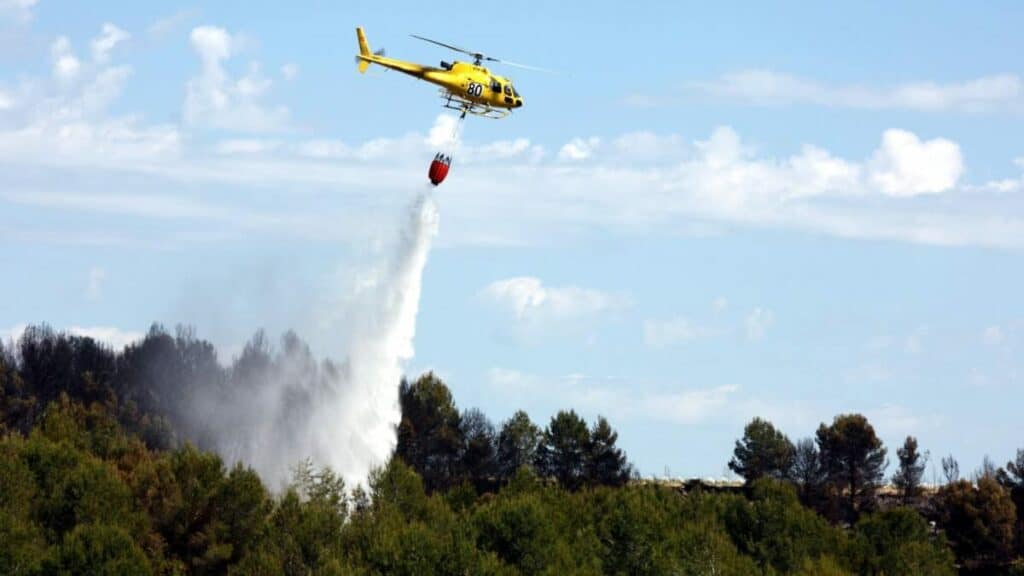
With wildfire seasons seeming to get worse every year the amount of helicopters brought in to fight them gets more and more. With each helicopter doing its part to drop water on the fire there begs the question “How much water do helicopters carry”? Some of the fires seem to be huge so do they really carry enough water to make a difference?
Helicopters used on wildfires can carry between 150-2600 US Gallons of water in a bucket suspended below the helicopter or between 200-2800 US Gallons in tanks fixed to the underside or inside the helicopter fuselage. The bigger and more powerful the helicopter, the more water it can carry.
A helicopter carrying water on wildfires is an asset used by the fire or forestry management team to help assist ground crews in dealing with cooling and controlling fires. Selecting the right-sized helicopter to be able to drop sufficient amounts of water on the fire is the key.
Let’s have a look at some of the most popular helicopters used to fight wildfires and see how much water they carry.
How Much Water Can Helicopters Carry?
To be effective on even the smallest fires a helicopter has to be able to deliver a reasonable amount of water volume. To be able to do that they need to have enough power to lift the water in the first place. For that reason, the Bell 407 is usually the smallest helicopter seen used to deliver water.
Smaller machines like Bell 206 Jet Rangers, Bell Longrangers, and Airbus EC120s are used for transporting personnel, gear, and supplies, as well as aerial mapping and surveying as those roles require far less power.
Here are some of the most popular helicopters you will see working wildfires across the globe:
Bell 407
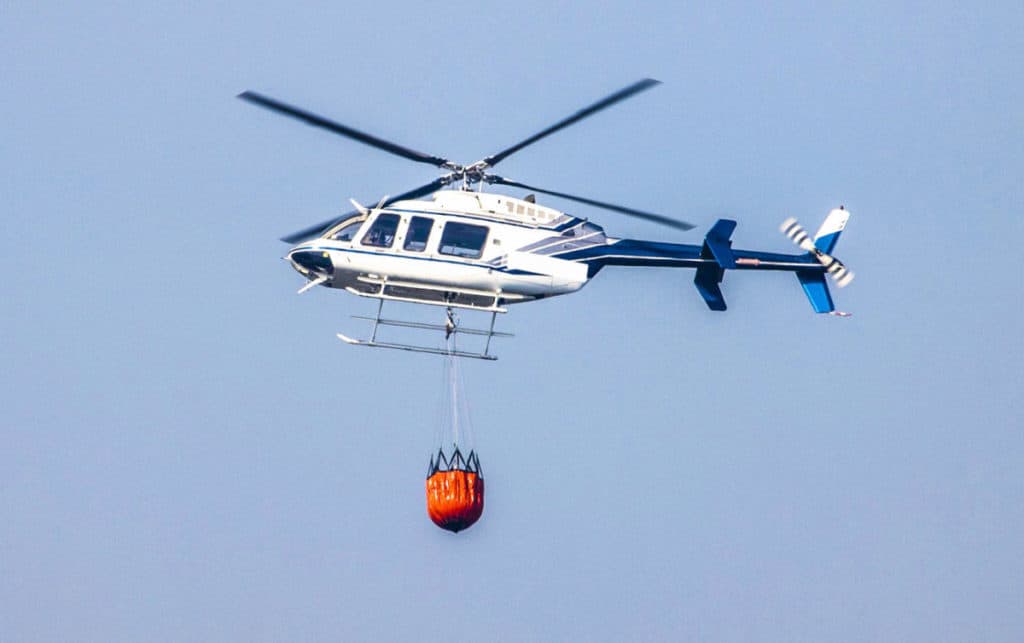
Water Carrying Capacity: 216 US Gal / 820 liters
The Bell 407 is one of the smallest helicopters used on wildfires. Water buckets, also known by their brand name ‘Bambi Buckets’, are used either connected directly to the belly hook on the helicopter or on 50ft or 100ft long lines. The speed and maneuverability of the 407 make them great on small fires to help get them out before they become a problem.
The 216 Gallon Bambi Bucket will weigh close to 1,900 lbs/860 kg when full.
Airbus H125 Astar
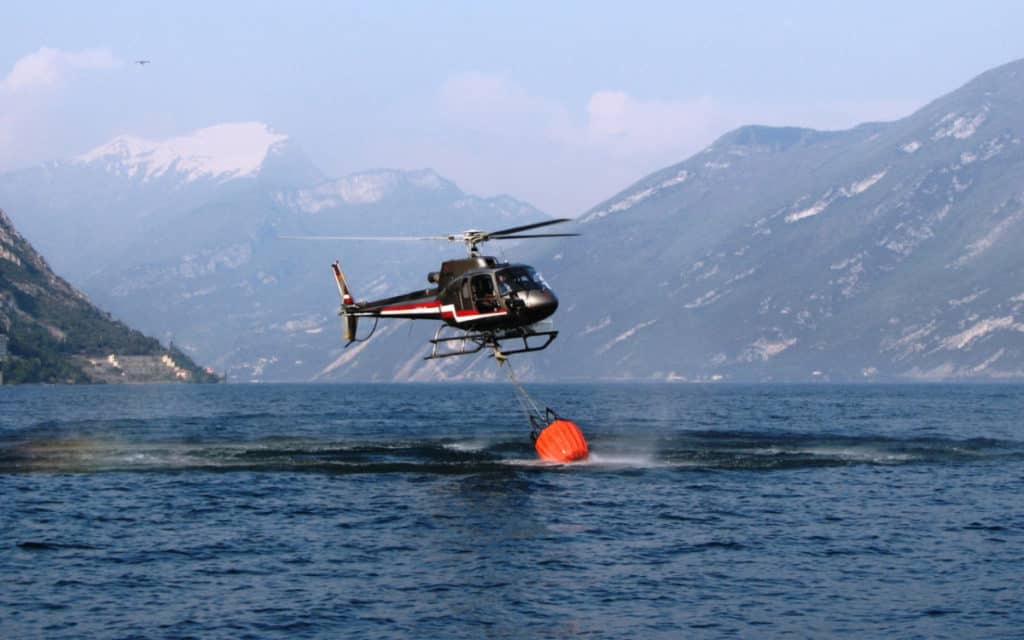
Water Carrying Capacity: 240 US Gal / 910 liters
The H125 Astar is one of the most used helicopters on wildfires all over the world. Loaded up with a team of 5 fire crews, they play the ‘Initial Attack’ aircraft. The pilot drops off the crews and their gear, puts on the bucket, and assists them from the air. Buckets are used either connected directly to the belly hook on the helicopter or on 50ft, 100ft, or 125ft long lines.
The 240 Gallon Bambi Bucket will weigh close to 2,130 lbs/970 kg when full.
Bell 205
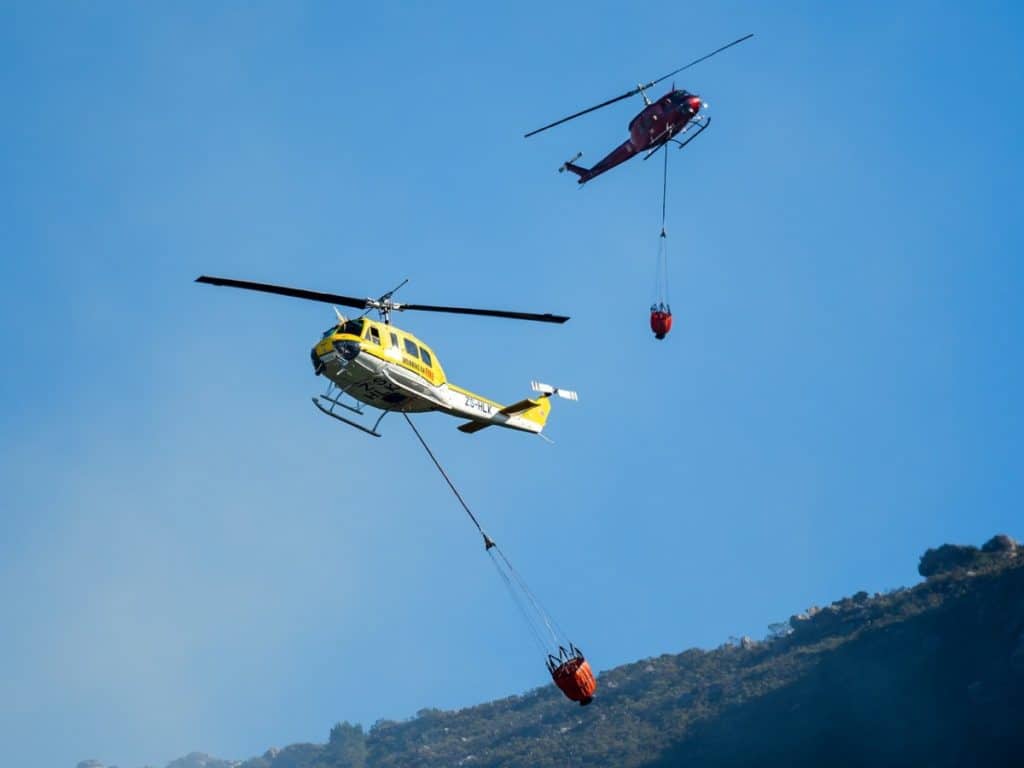
Water Carrying Capacity: 320 US Gal / 1,230 liters
The last of the single-engine fire fighting helicopters before the machines start getting big! The Bell 205 is one of the bucketing workhorses on most fires in North America. When bucketing, the pilot will switch from the right seat to the left seat so they can ‘Lean’ out of the left window to see the bucket better underneath the helicopter
The 320 Gallon Bambi Bucket will weigh close to 2,840 lbs/1,290 kg when full.

Join My Newsletter & Get Great Tips, Information and Experiences To Help You Become a Superb Pilot!
Bell 212
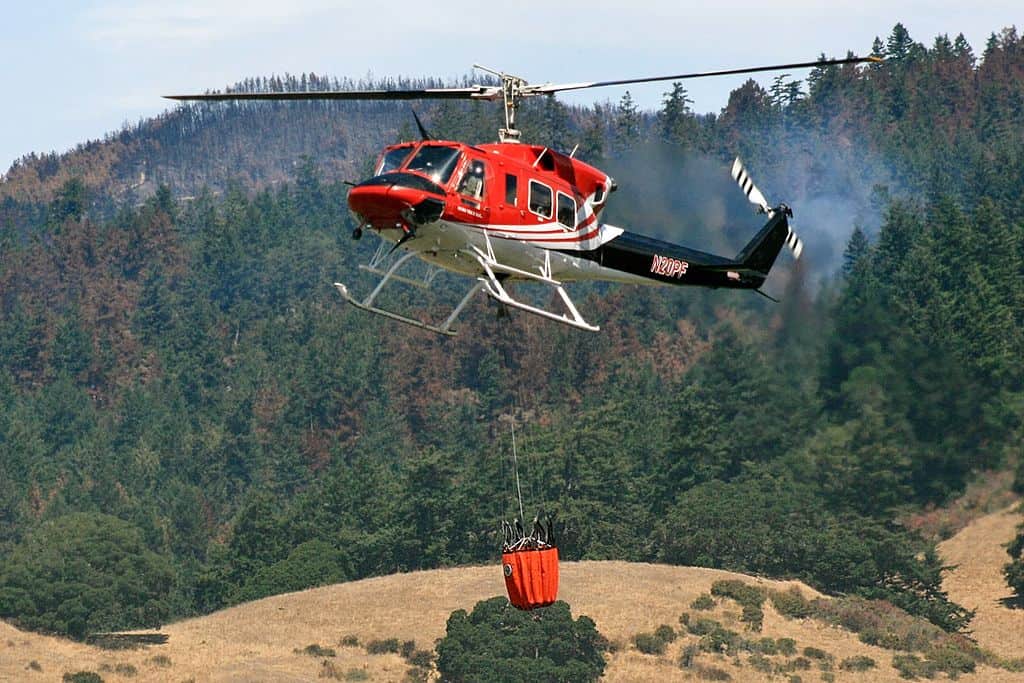
Water Carrying Capacity: 420 US Gal / 1,590 liters
Probably the most common helicopter used on wildfires in Canada for sure. The twin-engine Bell 212 is either used with a bucket and a fire crew attack team or can be installed with a belly-mounted drop tank and suction hose. The large amount of water and crews these helicopters can carry makes them a great machine to operate on fires with an hourly cost that is not crazy,
The 420 Gallon Bambi Bucket will weigh close to 3,650 lbs/1,650 kg when full.
Leonardo AW139
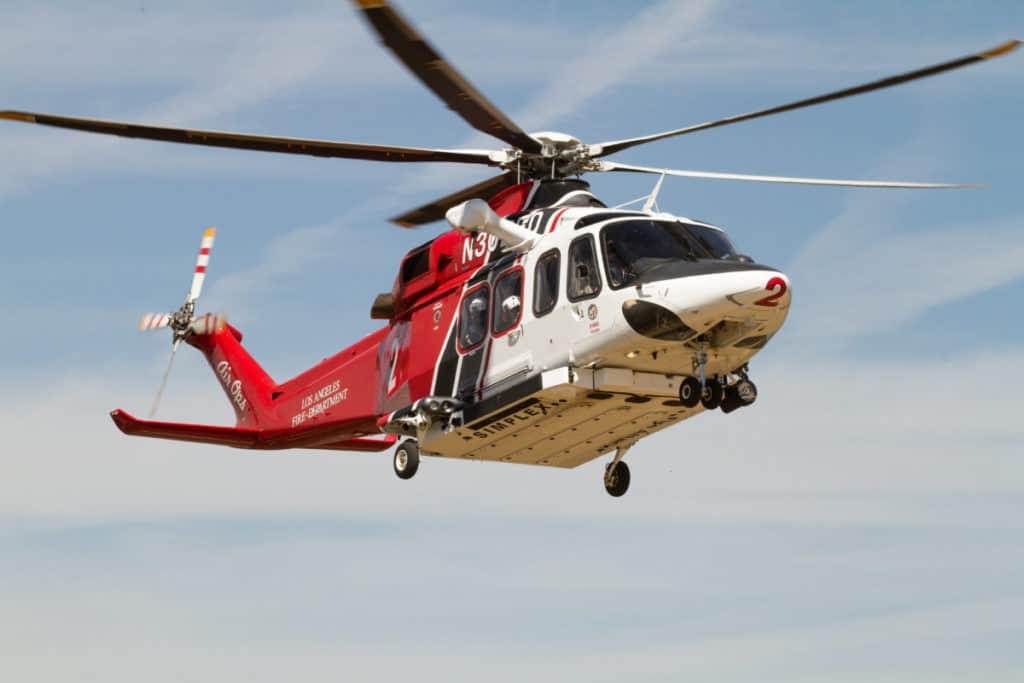
Water Carrying Capacity: 480 US Gal / 1,817 liters
Made famous by the Los Angeles Fire Department, their fleet of 5 AW139 fire attack helicopters can be quickly fitted with a belly-mounted tank and suction hose, known as a snorkel. The pilots will bring the helicopter to a hover over a water source and suck up water into the tank at a rate of 400 gallons per minute. Once full, the pilots can adjust the drop rate of the tank to dump all the water in one drop or spread it out over a large area as they fly.
The 480 Gallon tank will weigh close to 4,000 lbs/1,815 kg when full.
Sikorsky UH-60 Blackhawk
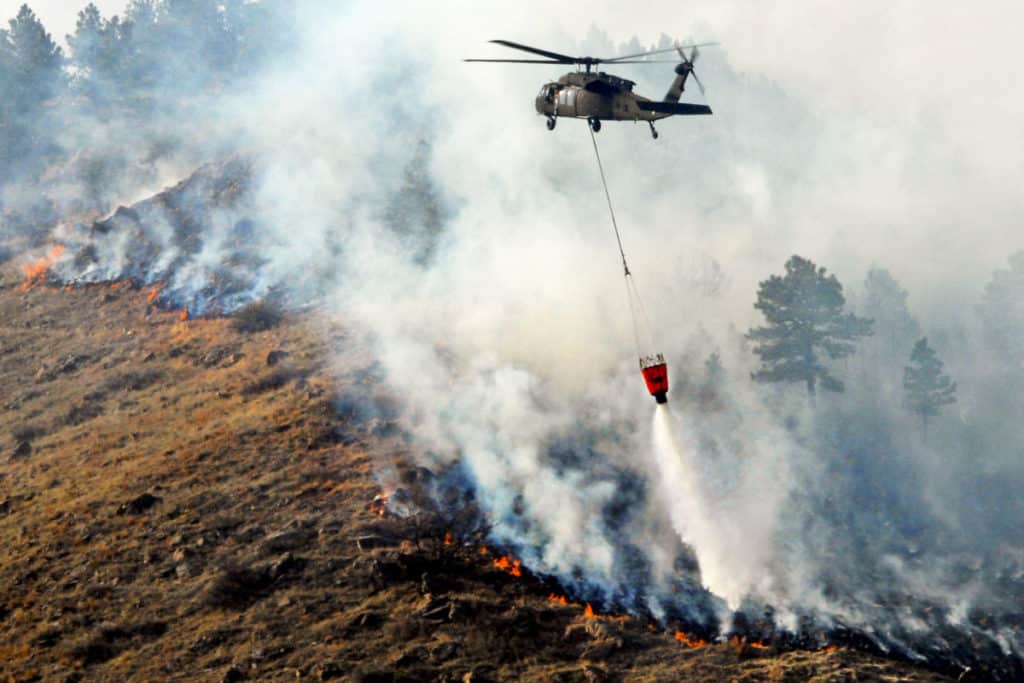
Water Carrying Capacity: 660 U.S. Gal / 2,500 liters
When the wildfires begin to get really big or there many fires burning, the Forestry Service will enlist the help of the military and their helicopters. The Sikorsky UH-60 Blackhawk and its variants are a popular sight on fires as their power allows it to deliver a good amount of water to a fire via a Bambi Bucket. You may have seen the military helicopters painted with bright pink paint – This is to help them be seen by other aircraft in poor, smokey conditions.
The 660 Gallon Bambi Bucket will weigh close to 5,750 lbs/2,600 kg when full.
Sikorsky SK61
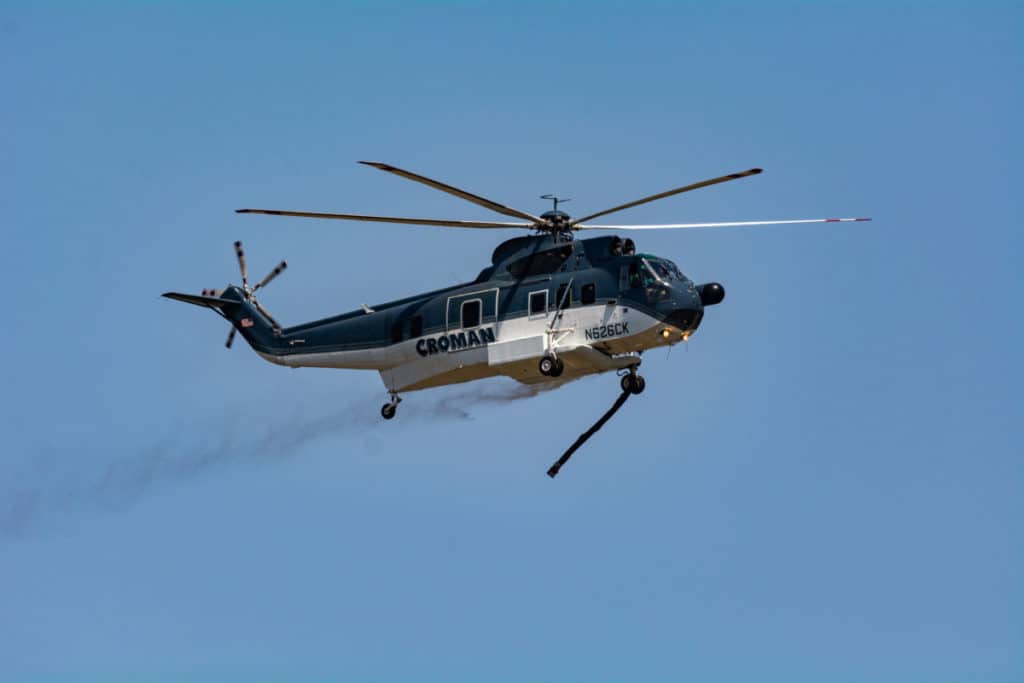
Water Carrying Capacity: 1,000 US Gal / 3,785 liters
The start of the ‘Heavy’ classification of helicopters, the S61 is the backbone of most large campaign fires. Depending on the company, the S61 will either be fitted with a Bambi Bucket on the end of a 150ft – 200ft longline or will have a belly tank fitted like the one in the photo.
The lifting power of this twin-engined helicopter allows for large amounts of water to be delivered to a fire quickly.
The 1000 Gallon Bambi Bucket or belly tank will weigh close to 9,100 lbs/4,100 kg when full.
Erickson S-64 Air-Crane
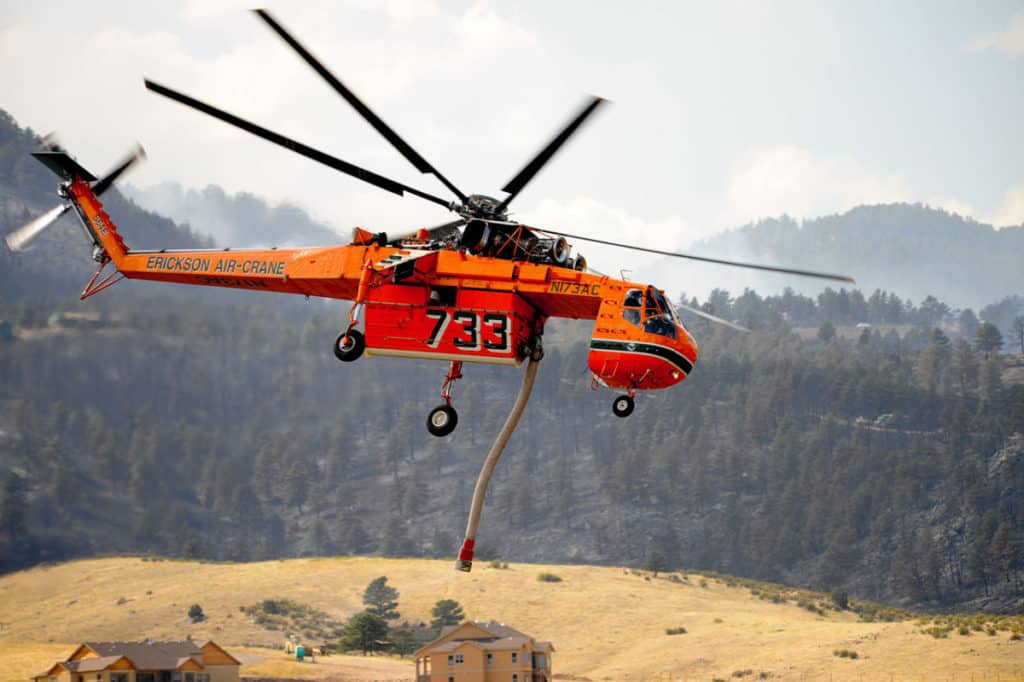
Water Carrying Capacity: 2,650 US Gal / 10,000 liters
By far one of the most recognizable firefighting helicopters in the world! This odd-looking helicopter is designed for one thing only – Lifting. When configured for fighting fires, the 10,000 liter belly tank can be filled using the snorkel when hovering over freshwater, or if saltwater is available, they can use the ‘Sea Scoop’ to fill the tank while flying forward. This keeps the salty water behind the helicopter helping to prevent corrosion.
The 2,650 Gallon tank will weigh close to 22,100 lbs/10,000 kg when full.
Boeing CH-47D Chinook
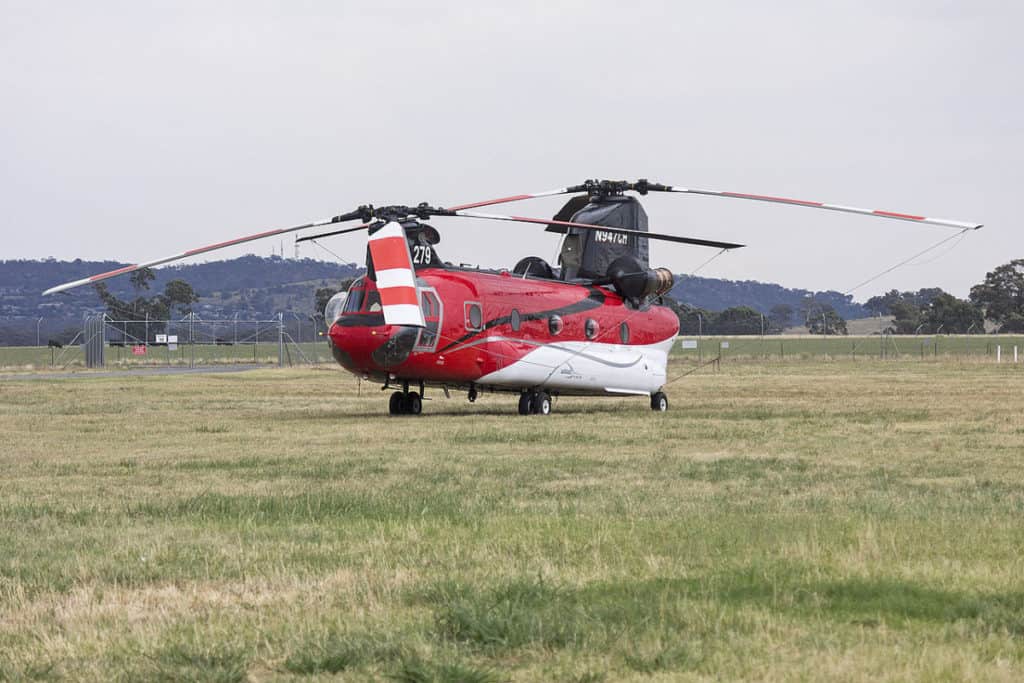
Water Carrying Capacity: 2,800 US Gal / 10,600 liters
Just as iconic as the Air-Crane, the twin-rotor Chinook is another popular aircraft on large wildfires. Whether it is being flown by the military or the three commercial companies (Columbia, Coulson & Billings), this helicopter delivered a tremendous amount of water.
Utilizing a tank installed inside the fuselage, the pilots can suck up water via a snorkel and fill the tank in 60 seconds from the smallest of water sources. The ability to add retardant or foam to the tank allows the Forestry Service to utilize this helicopter in many ways on a fire. The water is dispersed by doors mounted on the underside that can dispense the water at varying flow rates.
The 2,800 Gallon tank will weigh close to 23,300 lbs/10,600 kg when full.
To Finish
The smallest Bambi Bucket made for a helicopter is 72 US gallons, however, something this small would rarely be useful on anything larger than a small brush fire. To be effective, helicopters need to be able to deliver over 200 gallons of water per drop, and when you get many helicopters in a line constantly dropping their loads, they can really become an effective tool.
For more water to be delivered you need more power. To carry the most amount of water you need a helicopter with two engines, usually two pilots, and some great teamwork by all those involved, both in the air and on the ground.
For more information on how helicopters are used to fight wildfires in other ways please have a read of my article:
Helicopters – How Are They Used To Fight Wildfires?
If you found this article helpful you might like this video I created for you on how a Bambi Bucket works:

